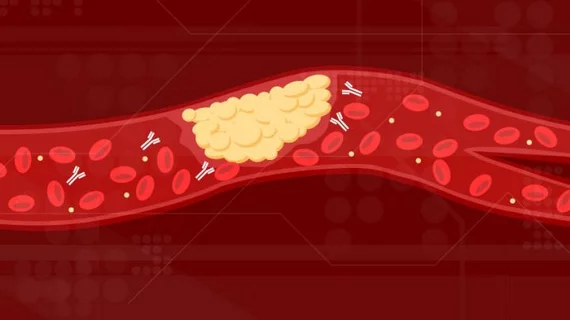Imaging suggests blood clots are more common in COVID than pneumonia
Blood clots may be more common in patients with COVID than in those with community acquired pneumonia (CAP).
According to a recent study published in the Annals of American Thoracic Society that examined more than 7,000 COVID patients and 4000 CAP patients, venous thromboembolisms (VTE) were detected in those with COVID via multiple imaging modalities at a rate of 16.3% compared to 9.2% in individuals with CAP.
“Thrombosis has emerged as a potentially important feature of COVID-19. Abnormal markers of hypercoagulability have been reported including elevated D-dimer, elevated fibrinogen levels, elevated factor VIII levels, elevated sepsis induced coagulopathy scores, and thrombocytopenia,” corresponding author Samuel Brown, MD, of the Intermountain Medical Center in Murray, Utah, and colleagues wrote. “Early in the pandemic multiple inpatient and autopsy studies suggested the possibility of an increased prevalence of venous thromboembolism (VTE) in COVID-19 patients.”
Early COVID research cited thrombosis as a common finding on imaging of patients with the respiratory infection. Since then, studies have included insufficient data about VTE in COVID patients, which has limited researchers’ abilities to make distinct conclusions surrounding thrombophilia associated with SARS-CoV-2 infection.
To overcome this, experts at a Utah Hospital system analyzed thousands of medical images from COVID positive patients to compare them to imaging of individuals diagnosed with CAP before the onset of the pandemic. All underwent either lower extremity doppler ultrasound or computed tomography pulmonary angiogram (CTPA).
This resulted in images analyzed for 7,509 COVID-19 patients (mean age 57 years and 50% female) and 4,304 CAP patients (mean age 67 years, 48% female). Out of 7,509 COVID patients, 38% underwent VTE testing, compared to 43% of the CAP group. The COVID patients who underwent CTPA observed a 3.2% VTE positivity rate compared to 1.7% for CAP patients. These rates were 3.3% vs. 2.5% for patients who had LE dopplers performed. Accumulatively, the researchers found that 16.3% of COVID patients and 9.2% of CAP patients were diagnosed with blood clots.
“This observation aligns with former reports that COVID-19 infection is uniquely thrombogenic among hospitalized medical patients," the authors wrote. "Our estimates may still be underestimates of the true incidence of VTE in COVID-19 since testing was done for clinical indications but suggests that VTE is more common in COVID-19 than in pneumonia caused by pathogens other than SARS-CoV-2."
Related COVID-19 articles:
Intrathoracic complications in COVID patients: Incidence, associations and outcomes
Specialized CT protocol reveals small airways disease in COVID long haulers
These ultrasound features distinguish between COVID vaccine-related and malignant adenopathy
'Pandemic brain': PET/MRI images reveal how COVID's impact is felt by non-infected individuals

